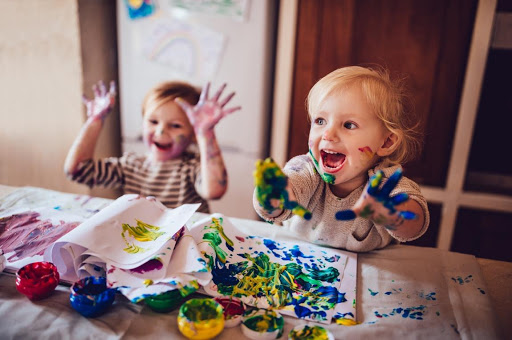Creativity is a crucial component of childhood development that encourages problem-solving, critical thinking, and learning through play
Creativity is the inspiration for art, innovation, and out-of-the-box thinking, making it an important factor in the overall advancement of society. Children are natural creators; artists, storytellers, inventors, actors, and engineers. They see the world through a lens of opportunity, potential, and wonder that often diminishes as we grow into adults and concentrate on more practical matters.
Children are so inherently playful and imaginative that teaching more practical lessons often takes priority over fostering creativity during early childhood education. Learning to follow directions, tie shoes, and recite the alphabet may seem like more crucial skills to master, but creativity leads to critical thinking and problem-solving skills that can have lifelong benefits not only to the child but also to the world around them. Caregivers should recognize the importance of fostering creativity in young children, and encourage their natural instincts to see things from a unique perspective.
The natural creativity of kids
Supporting creativity from an early age can reinforce its importance in a child’s life and set the stage for further creative development for years to come.
Fine motor skills also begin to develop in a way that supports drawing, enabling children to create with purpose and intention. As a result, the desire to experiment, explore, and imagine ignites a curiosity and desire to learn.
Encourage this need to think, predict, imagine, and create by developing curriculum around the following suggestions to foster creativity:
Ask open-ended questions: Ask questions that don’t have a right or wrong answer and encourage them to express their answers with follow-up questions. For example, “What do you think dogs would say if they could talk?” or “If you could have one superpower, what would it be?”
Offer a variety of experiences: Provide unique sensory experiences like a slow-motion sensory boggle, eating jiggly gelatin, or digging in the dirt. Ask their opinion on art pieces. Take them to museums, libraries, and different natural settings. Let them explore the world with their eyes, ears, and hands.
Let them create: Offer a variety of art supplies. A roll of butcher block paper can be paired up with finger paints, crayons, or markers for scribbling. Stamps, stickers, and hand or footprints are all easy adult-supervised projects for toddlers that introduce colors, sensory experiences, and creativity.
Provide the right toys: Provide toys that allow children to use their imagination for self-directed play. Have an abundance of these types of toys on hand and allow open playtime to explore.
Inspire inventive storytelling: Ask about imaginative play and encourage children to expand upon their ideas or pretend scenarios. Make story time an everyday routine and pause between pages to ask animated questions about what will happen next or to point out details in the illustrations.
Children learn through play, which makes creativity an important and natural skill to cultivate and encourage. The intellectual flexibility that is developed by nurturing a child’s creative side translates to their problem-solving skills, ability to empathize, and a greater understanding of the world and people around them. Use your creative side to design lessons and activities that will encourage theirs.
The VA Infant & Toddler Network helps improve the quality of care for infants and toddlers through extensive resources, services, and education for caregivers. Learn more about how we can help you improve the standard of care.




